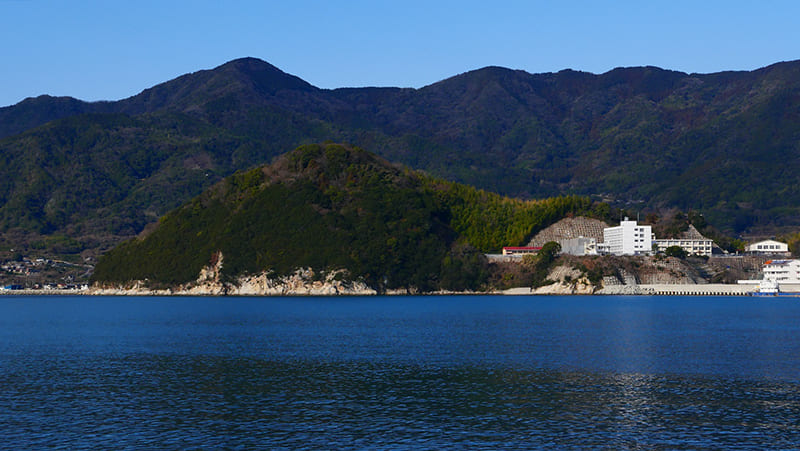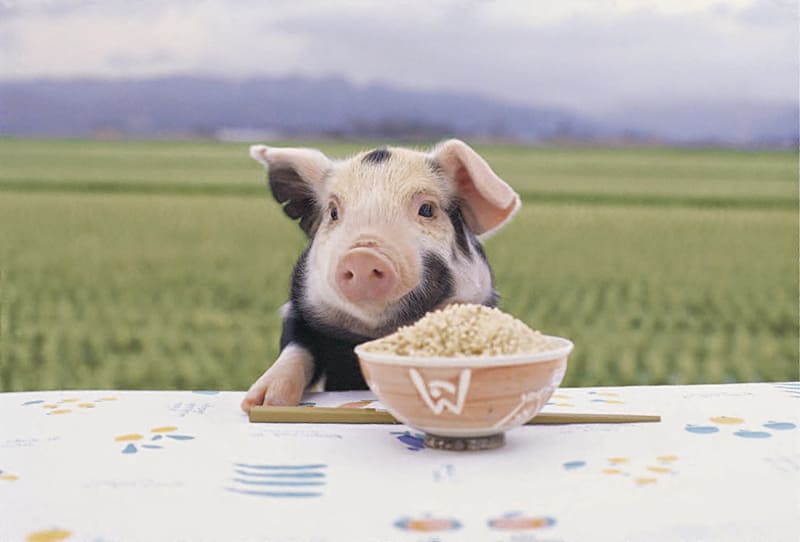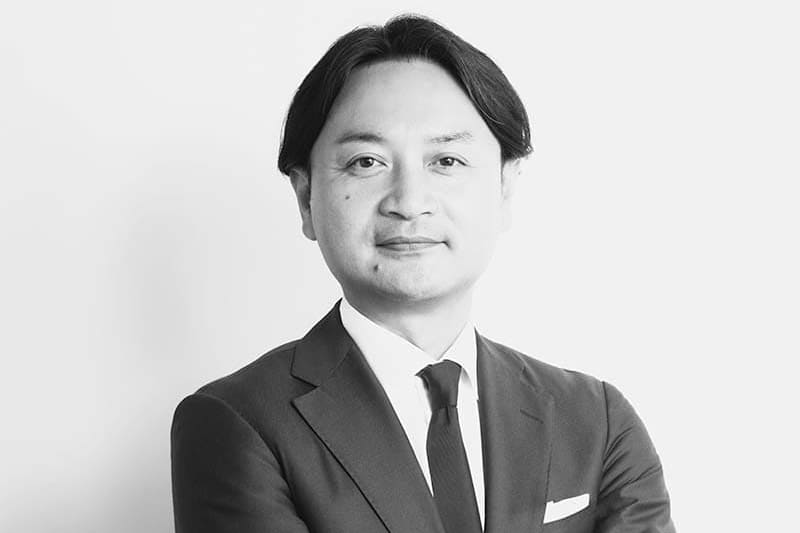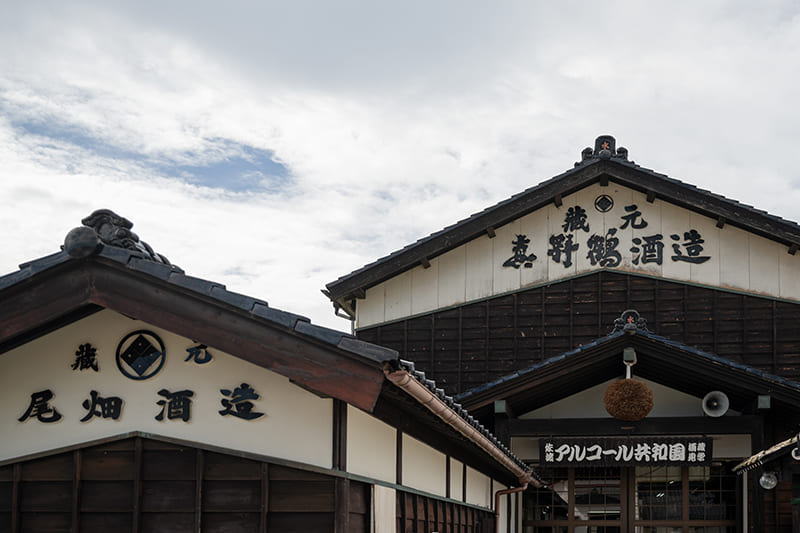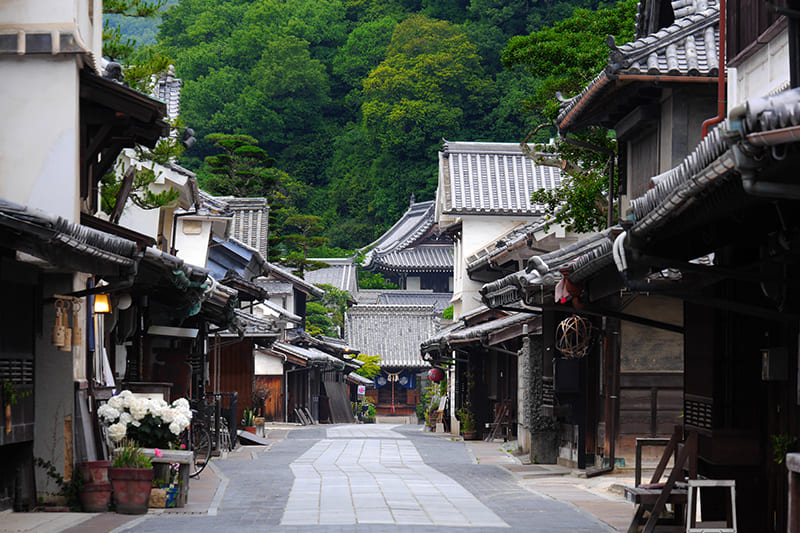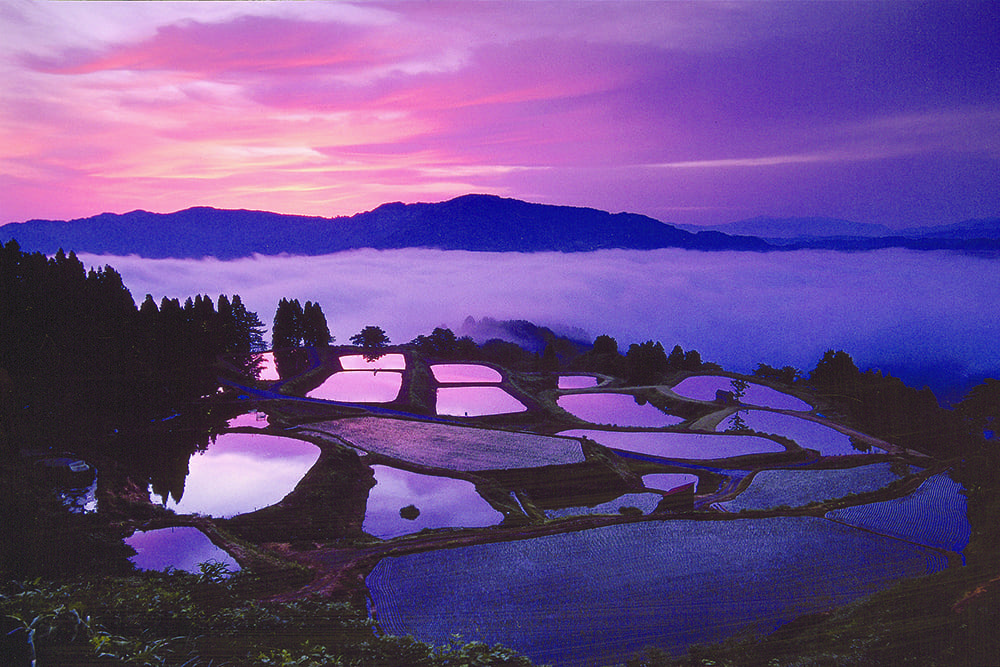October 27, 2023
Obata brewery distills Sado’s charms into sake
INTERVIEW
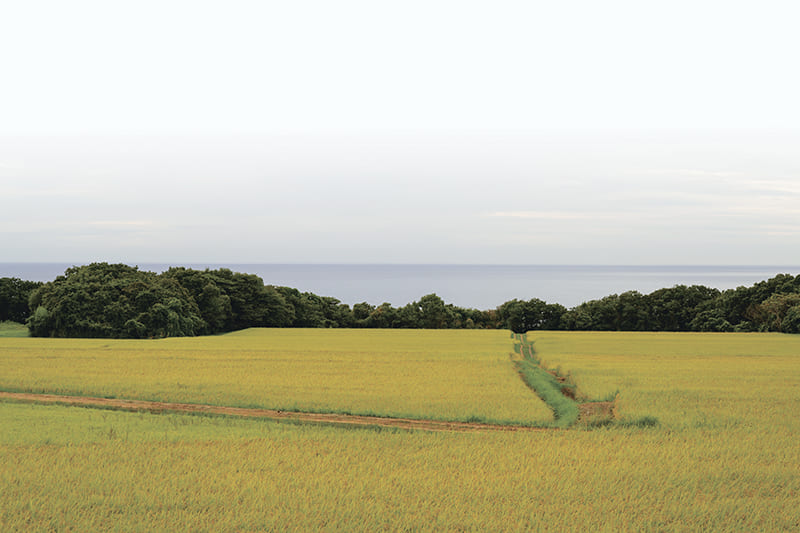
PHOTOS: TAKAO OHTA
Obata Sake Brewery was founded in 1892 on Sado Island in Niigata Prefecture. Rumiko Obata, the fifth-generation manager of the brewery, which has been making sake for over 130 years, is now working to protect and nurture sake culture from various approaches, including efforts to preserve the rich natural environment that is essential for making delicious sake and building a bridge between Sado and the world.
After attending a university in Tokyo, she stayed in the city and worked as a publicist for a major film company. But when her father fell ill, she asked herself, “If tomorrow were the last day of my life, what would be the last thing I would want to do?” Her answer was clear: “I would want to take a last sip of my family brewery’s sake.” Then she decided to return to her hometown with her husband and take over the brewery at the age of 28.
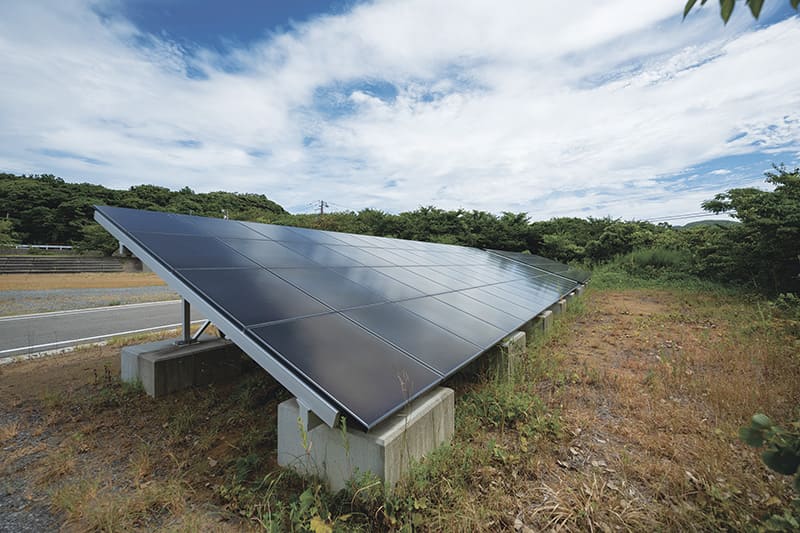
She believes that the rich natural environment is the source of Sado’s charms, and in 2003 began exporting her sake to other countries to promote the island. “We think that sake should tell the story of the region where it is produced. That is why we have been working to put local characteristics into our sake,” she said. All of their sake strongly represents Sado’s regionality through its ingredients, brewing methods and compatibility with local foods.
In 2008, she came across Nishimikawa Elementary School, which was scheduled to be closed in two years. It is located about a 15-minute drive along a coastal road from Obata Sake Brewery. From the school building, which stands on a cliff, one can see the sunset on the ocean. “My husband said it would be a waste to let it fall into ruin, and that we should use it as our second sake brewery, but I vehemently opposed the idea,” she said. Although sake exports had been increasing year by year nationwide, they still accounted for only 1.8% of total shipments in 2008, and domestic shipments had declined by over 40% in the previous decade. It is not surprising that she was reluctant to invest in a new brewery. “But my husband brought me to the place, saying I should see it anyway. When I saw the view from the top of the hill on which the schoolhouse stands, I was struck by the beauty of Sado Island all over again. I couldn’t help but turn to my husband and say, ‘We have to do this,’” she said.
The brewery is now called Gakkogura (School Brewery) and has primarily been used as a base for sake brewing since 2010. Sake brewing normally starts in winter, but Gakkogura makes it possible to brew sake during the hot summer months by creating a wintery environment inside the building. Furthermore, weeklong programs offer experiences in brewing sake, mainly during the summer. Despite the lack of advertising, the programs attract many participants from overseas, indicating a high level of global interest in sake.
The programs ensure that the participants not only experience the brewers’ work, but also mix with the local community and get a taste of the Sado lifestyle. The programs have become familiar to the locals since their launch eight years ago. The townspeople do not hesitate to greet participants they happen to meet on the street, saying, “Oh, you must be one of the ones taking part in the brewing program.”
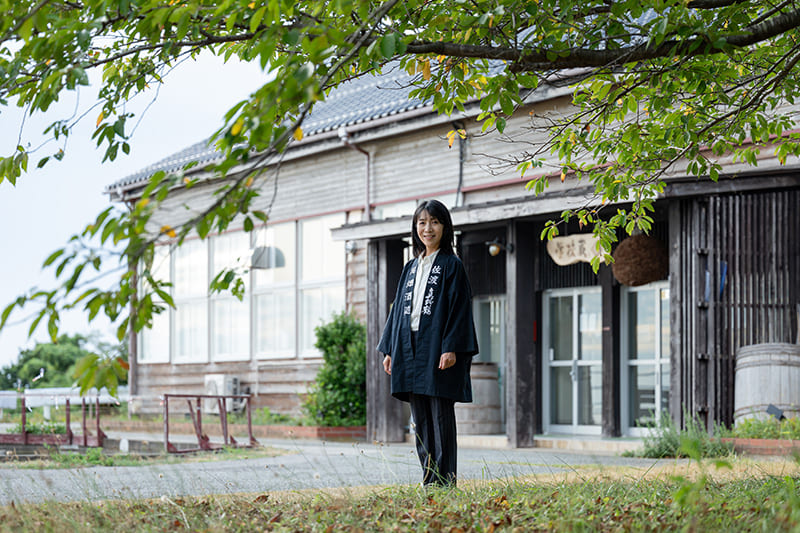
Last year, a cafe was established in a corner of the school building, with a view of the sea. It serves foods, desserts and drinks combining rice malt and byproducts like sake lees with other ingredients produced by local farmers, contributing to reducing food waste and food loss.
Solar panels have been installed near the school building to increase the percentage of renewable energy used to power the facility. This has implications that go beyond achieving zero carbon emissions. The facility’s ability to operate independently without relying on outside resources would play a role in supporting the community in the event of a disaster or other emergency. “We wanted to create a model that can realize our daily lives, tourism and emergency preparedness on a single platform,” Obata said.
The selection of materials for sake brewing also reflects the company’s commitment to the region. Some of the rice it uses comes from paddies that utilize crushed oyster shells as a soil conditioner. The oysters are cultivated in Lake Kamo in the eastern part of the island, near the port where ferries connect the island to Niigata. This is one of the environmentally friendly farming methods employed in Sado to nurture the Japanese crested ibis and other wildlife. The wild Japanese crested ibis was once driven to extinction. But in Sado, thanks to the breeding, release and protection of the birds, they can now be seen in rice paddies all over the island.
In the southeastern part of Sado Island, there are rice terraces with a 400-year history, called Iwakubi Shoryu Tanada (Iwakubi Rising Dragon Rice Terraces). As the name suggests, about 460 paddies of various sizes are arranged in a staircase pattern, filling the valley as if a dragon were ascending into the sky. The paddies, created to make the most of the hilly land, are small with irregular shapes, making it impossible to farm them with large machines. “We learned that the rice farmers in the area are facing a lack of successors partly because of the amount of hard manual labor,” Obata said. “We have been purchasing their rice since 2019 in the hope that their efforts pay off. Ryu no Megumi (Dragon’s Blessing) is the name of the sake we make from their rice.”
She pointed out that sake brewing in Japan has always been a communal effort, using sustainable methods handed down for generations, which is why many breweries have survived to be centuries old. “Letting this become known to the world through sake and the sake-brewing experience will help increase the presence of sake in the world and expand its market. That will allow us to continue sake brewing and rice farming as well as efforts to preserve clean water, nature and the landscape, forming an enduring cycle,” she said.
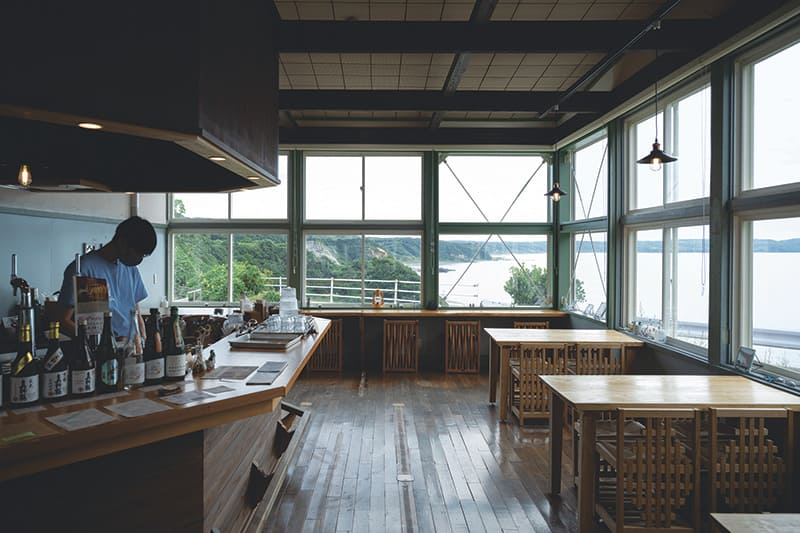

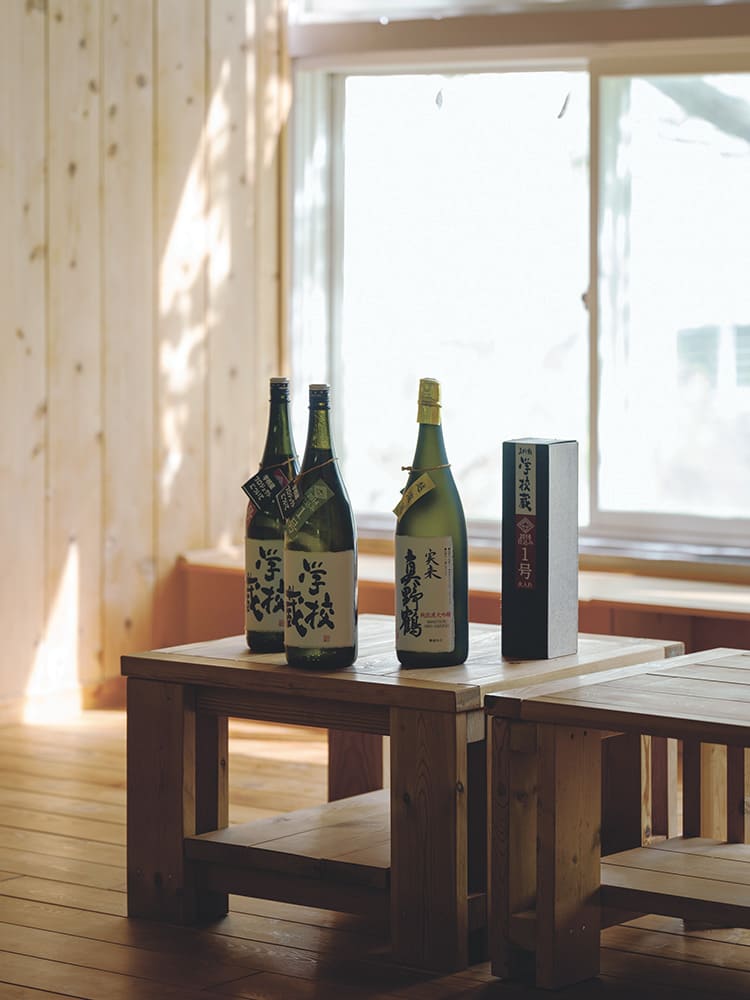
RUMIKO OBATA
Rumiko Obata grew up in the sake world as the second daughter of the family that runs Obata Sake Brewery on Niigata Prefecture’s Sado Island. The brewery was founded in 1892 and produces various kinds of sake made from locally produced rice, including Manotsuru, its signature sake, which has won multiple awards. She took over as the fifth-generation owner in 1995 and established Gakkogura (School Brewery) in 2014 using the building of an elementary school that had been closed in 2010. In 2022, a cafe and an accommodation facility for participants of the brewery’s sake-making workshop were constructed inside the building.
離島で行われる、サステナブルな酒づくり。
1892年に新潟県佐渡島で創業した〈尾畑酒造〉は130年以上にわたって日本酒を作り続けてきた。その酒蔵の5代目である尾畑留美子は、酒造りに欠かせない豊かな自然を守る取り組みや、佐渡と世界との橋渡しなど、様々な側面から酒文化を守り、育てる活動を展開している。大学から東京に出たが、28歳の時父親が病に倒れたことで、夫と共に佐渡に戻って酒蔵を継ぐ決意をした。そんな中、2008年に出会ったのが、2年後に廃校になることが決まっていた小学校だ。2010年よりこの小学校跡は、〈学校蔵〉という名称で、酒造りを行っている。夏場にはここで、酒造り体験プログラムが実施されていて、海外からの参加者も多い。
2022年には校舎の一角にカフェを開業。酒造りの過程で出た酒粕などの副産物を活用し、廃棄物、フードロスの削減にも取り組んでいる。また、施設で使われる電力には再生可能エネルギーの割合を増やすよう校舎の近くに太陽光パネルを設置した。ゼロカーボン達成を目指し、災害など有事の際には地域を支える役割も果たす。
Return to Sustainable Japan Magazine Vol. 29 article list page

